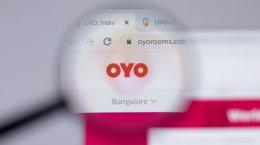Indian companies are returning to the overseas debt markets as record low interest rates, improved risk appetite and rebounding investor confidence enable them to raise money more cheaply than at home.
Indian Railway Finance Corp (IRFC) this month agreed to raise a $450 million loan from a consortium of banks at a spread of 300 basis points above six-month U.S. dollar Libor, the tightest since the collapse of Lehman Brothers last year.
State-run lender Rural Electrification Corp (REC) is negotiating with U.S.insurer Aflac Inc for a $200 million yen-denominated loan as part of the company's $500 million overseas borrowing plan.
Private sector lender Axis Bank, meanwhile, is looking to raise $300 million through a bond offer that would be the first overseas issue in a year from an Indian commercial bank.
Other firms, including State Bank of India, are said by market insiders to be considering raising debt abroad.
"Global appetite for Indian debt has improved, credit spreads have come in and deals are happening now," said Ajay Mahajan, managing director for financial markets and institutional banking at UBS in India.
He noted that Indian companies posted solid results in the most recent quarter, while the index of industrial production (IIP) averaged a robust 7.4 percent during July and August.
"It suggests the Indian economy has turned the corner and that should bode well for companies looking for debt capital as well as equity," Mahajan said.
The interbank cost of borrowing dollars, euros and sterling based on three-month Libor (London Interbank Offered Rate) is touching new lows as central banks and governments flood global financial markets with liquidity.
"There is a huge amount of risk appetite for India-specific papers," said Axis Bank's President of Treasury Bapi Munshi.
He said investors have scaled down their demand to a spread of below 300 basis points over Libor, from 325 bps in June when the bank started negotiating with investors.
"When it is around 250 or near 200, we will test the market. Appetite has improved compared to June and we expect spreads to narrow," Munshi said.
GLOBAL BARGAIN-HUNTING
The cost of borrowing overseas is coming down significantly.
The five-year Reuters benchmark dollar-rupee currency swap , used by borrowers to price foreign debt-raising, trades at around 5.7 percent, 70 bps lower than the 6.4 percent in late June.
By comparison, a top-rated Indian company would pay about 8.5 percent to raise funds through rupee bonds.
Bankers say that after adding the hedging cost of buying a dollar-rupee forward contract, borrowing overseas costs about the same as it does locally, but is expected to become cheaper in the coming weeks.
Current rules allow each Indian company to raise up to $500 million during a financial year through foreign borrowings. A withholding tax of 20 percent is applicable on interest earned by investors in foreign borrowings of local companies.
Fund-raising plans of Indian firms, like other borrowers globally, suffered in the aftermath of Lehman's collapse, and the global credit crisis that followed triggered a spike in spreads linked to benchmarks like Libor and U.S. Treasuries.
Indian companies did not sell any bonds overseas during the three quarters through June, according to Thomson Reuters data. Issuance resumed this month, with Export-Import Bank of India's (Exim Bank) $150 million five-year issue the first.
Offshore loans are slowly returning after Indian companies raised just $2.8 billion this year through June. By comparison, they raised $15.4 billion in 2008 and $28.9 billion in 2007.
Most of the overseas borrowing in 2008/09 was completed before Lehman collapsed, strangling global credit markets.
While sentiment in the credit markets has improved from a year ago, analysts say that only top-rated firms can take advantage of falling rates.
"Conditions for debt issuance have improved from the severe credit freeze in the fall of 2008. However, they remain unfavorable to companies at the lowest rungs of the ratings ladder," Standard & Poor's said in a recent note.
Risk appetite for emerging market issuers is returning.
For example, ICICI Bank's liquid five-year credit default swaps (CDS), which touched a record high of about 1,700 bps in October 2008, have narrowed to around 290 bps .
This means an investor would need to pay $300,000 annually to insure against a default of $10 million on underlying debt issued by India's largest private sector lender.





